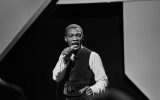[ad_1]
Greetings and good vibes, reggae massive! Today, we’re taking a trip down memory lane to explore the cultural impact of skinhead reggae. This unique subgenre emerged in the late 1960s, blending the smooth sounds of reggae with the rebellious spirit of the working-class skinhead subculture.
From the dancefloor to the streets, skinhead reggae made its mark on the music scene with its infectious beats and socially-conscious lyrics. Artists like Desmond Dekker, The Upsetters, and The Pioneers brought a new sound to the airwaves, drawing inspiration from the ska and rocksteady movements that came before them.
But skinhead reggae wasn’t just about the music – it was a cultural movement in its own right. Skinheads, with their trademark shaved heads, Doc Martens boots, and button-down shirts, found a sense of identity and camaraderie in the music they loved. They took to the dancefloors of clubs and sound systems, stomping and skanking to the grooves of their favorite tunes.
But beyond the dancefloor, skinhead reggae had an impact on the streets as well. The music spoke to the struggles and aspirations of the working class, addressing issues like poverty, racism, and social injustice. Songs like The Ethiopians’ “The Whip” and The Maytals’ “Monkey Man” became anthems of empowerment and resistance, rallying the skinhead community to stand up and be counted.
Today, the legacy of skinhead reggae lives on in the hearts and minds of music lovers everywhere. Its influence can be heard in the rhythms of contemporary reggae and ska bands, as well as in the fashion and attitude of modern-day skinheads. So let’s raise a toast to the rebels and revolutionaries who made it all possible, and keep the vibes alive for generations to come.
That’s all for now, reggae massive. Keep skanking, keep grooving, and keep spreading the message of love and unity through the power of music. This is your reggae radio DJ signing off, until next time. Bless up!
[ad_2]






